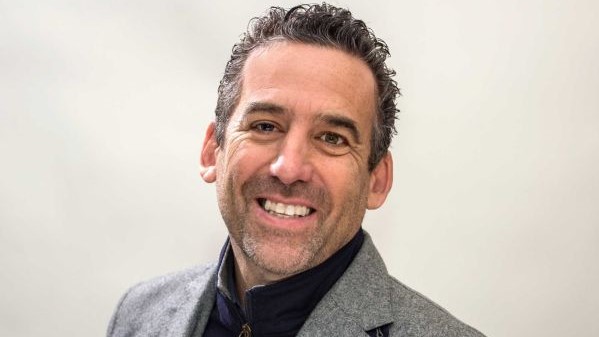Sinclair’s Bally Sports Plus Streaming App To Launch June 23
Will soft-launch at $19.99 a month in five markets

Sinclair Broadcast Group’s long-awaited direct-to-consumer regional sports streaming service will emerge from the dugout on June 23.
Bally Sports Plus will initially be available in five markets where the company’s Diamond Sports Group’s regional Bally Sports networks carry Major League Baseball’s Kansas City Royals, Detroit Tigers, Miami Marlins, Milwaukee Brewers and Tampa Bay Rays.
The app will cost $19.99 a month, or $189.99 a year, and enable fans to watch games without subscribing to a multichannel pay TV cable, satellite or streaming service.
Rob Weisbord, Sinclair’s chief operating officer and president of broadcast, told Broadcasting+Cable that Bally Sports Plus would have a soft rollout at first, with additional marketing support coming after Major League Baseball’s All-Star break (July 18-21).
The direct-to-consumer service will be introduced in the other markets where the company has RSNs during the third quarter.
Bally Sports Plus is designed to reach the growing number of viewers who have dropped traditional pay TV or chosen less-expensive bundles that don’t include regional sports networks. The cord-cutting trend has threatened the revenue streams for the 19 regional sports networks Sinclair borrowed about $9 billion to buy in 2019.

“We still think our distribution partners are very, very important to us,” Weisbord said. “But what the leagues and we have to solve for is the next-gen viewer and be able to give them the apps and allow them to subscribe on the platform they want to watch. We’re looking at DTC to bridge the gap.”
The smarter way to stay on top of broadcasting and cable industry. Sign up below
Initially, the app will be available for mobile devices and is expected to show up on Roku around baseball‘s All-Star Game.
“The first thing we’re focused on is the quality of the video,” Weisbord said. “The games themselves are our tent poles so there’s a heightened level of scrutiny. We have to be on par with the Netflixes and the Disney Pluses.”
Eventually, the app users will be able to play fantasy and predictive games for prizes, get advanced statistics and buy tickets and merchandise.
“We want to entice the Xbox generation,” Weisbord said. “That’s who we envision as being the heavy app user and they’re used to interactivity. If we build up the interactivity, they’ll stay with the games longer, even if it’s a blowout.”
There will be virtual prizes, real prizes and, in some cases, cash prizes. “We want them to stay with the games and give them a component that makes them lean forward," he said.
Each added feature must be approved by the teams and leagues, so it might take some time to get them all activated.
The app will not have betting, but when activated it will be pretty easy for users to shift to the interactive Bally’s Sportsbook app wherever gambling is legal and the team approves.
Sinclair declared that it would have its direct-to-consumer product available in the second quarter, but the product has faced questions. For a while, it wasn’t clear if Sinclair had the rights it needed to stream games. Last year MLB commissioner Rob Manfred said Sinclair didn’t have enough digital rights to stream games and there were reports that MLB, along with other leagues, were considering launching their own streaming service.
Sinclair and the Bally Sports Plus app should just barely beat the deadline, satisfying Wall Street, but Weisbord said it was more important to make sure that the product worked well coming out of the gate.
Second Player in the Game
As it turned out, NESN beat Sinclair to market with its NESN 360 DTC app, which launched June 1 and carries Boston Red Sox games. NESN 360 costs $29.99 a month, making Bally Sports Plus look like a bargain.
Earlier users of NESN gave it mixed reviews, complaining about its price, its lack of connectivity with some devices and the inability to watch outside of the Boston area.
Weisbord said he expects Bally Sports Plus to improve as it iterates and adds features. “If our 1.0 is the best that we could do, we’ll be in big trouble,” he said. “It’s similar to a restaurant opening. Each month we expect to get more refined as we move along.”
To develop the app, Sinclair worked with tech company Deltatre. Bally Sports’ development team was headed by Mike Allen, who was with the NBA’s product team before being hired away by the broadcaster a year ago.
The Bally Sports app will enable pay TV subscribers to authenticate and watch games, and allow non-pay TV subscribers to join the direct-to-consumer service.
Advertising will be the same on the broadcasts and the apps. Weisbord is counting on that generating bigger audiences and more reach for advertisers.
Going into the direct-to-consumer product business, Sinclair is setting up an 800 number and a fully-staffed customer service team to help subscribers with any struggles they might have with the app, Weisbord said.
Weisbord declined to say how much Sinclair paid to develop the direct-to-consumer service, but when Diamond Sports got $600 million in new financing earlier this year, Sinclair laid out its projections for the service in a Securities and Exchange Commission filing.
The filing laid out worst-case, middle-case and best-case projections for the DTC. In the best case, Bally Sports Plus would grow from 6.7 million free subscribers in 2022 to 9.6 million in 2027. By 2027 EBITDA could reach $1.03 billion, according to the filing.
Weisbord said Sinclair expected the DTC product to break even in year three.
Many observers have warned that sports moving to streaming would be strike three for the traditional pay-TV bundle. Weisbord said he didn’t think Bally Sports Plus would induce cable subscribers to cut the cord.
Striving for ‘Viewer Optionality’
“I think those people [pay TV subscribers] are comfortable and most people hate change,“ he said. ”The people that have consciously cut the cord or shaved it, that’s really the target market. And I think there’s certain demographics that cut the core and certain demographics that will never cut the cord. Our whole focus is viewer optionality.”
Weisbord declined to say whether Sinclair’s cable and satellite distributors would get a payment for customers who sign up for Bally Sports Plus.
Sinclairis tipping off Bally Sports Plus during Major League Baseball season, when there are plenty of live games to air over a 162-game campaign. Fans get fewer games to watch when they root for their teams during basketball and hockey season. Weisbord think the app will be attractive year-round.
“Our thesis is this will have 12 months of sports on a contiguous basis,“ he said. “There’s that potential that if one team falls out of the race early, you might have some churn. But the value proposition at $19.99 a month, we think, is attractive, especially with how 4K HDR is coming about to really enhance viewers‘ enjoyment of the game. … We think where we have a three-team offering, it buffers that churn.”
When Sinclair starts marketing Bally Sports Plus, the advertising will be aimed at those cord-cutters and cord-shavers. Sinclair is in the process of hiring an ad agency that specializes in DTC products. “The focus will be on those that are unable to get the games,” he said. There might be some chatter about the app during the game broadcasts, but not many ads for it.
“The people getting the RSNs have traditional distribution, so that’s not really going to reach the audience that we’re looking to get to subscribe,” Weisbord said.
Sports is just the first area in which Sinclair is considering going direct to consumers. “You have to have unique content,“ Weisbord said. “And so today, you cannot go with hard news because it is kind of ubiquitous. But we’re always exploring. We believe the subscription business long term is a healthy business for us to be in, and our goal is to be in the e-commerce business.” ■
Jon has been business editor of Broadcasting+Cable since 2010. He focuses on revenue-generating activities, including advertising and distribution, as well as executive intrigue and merger and acquisition activity. Just about any story is fair game, if a dollar sign can make its way into the article. Before B+C, Jon covered the industry for TVWeek, Cable World, Electronic Media, Advertising Age and The New York Post. A native New Yorker, Jon is hiding in plain sight in the suburbs of Chicago.

